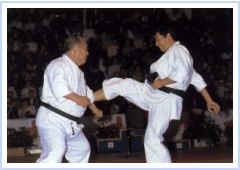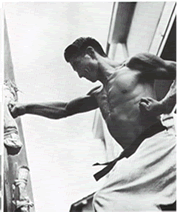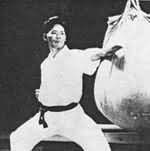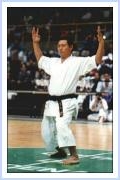Karate Terminology |  |
- Introduction
- Tachi-waza/Stances
- Keri-waza/Kicks
- Uke-waza/Blocks
- Tsuki-waza/Punches
- Uchi-waza/Strikes
- Counting
- Kata
- Other terms
Introduction
|
As karate is a Japanese art, techniques, stances, etc are referred to by their Japanese names. This is similar to the way in which musical terms are often referred to in Italian and dance terms in French. There is however a marked advantage to this. Becoming familiar with the Japanese terminology enables you to travel to a karate club anywhere in the world and train with the minimum of linguistic barriers. The following is a list of the more commonly used Japanese terms and their English equivalents. |
Tachi-waza/Stances
|
fudo-dachi: rooted stance |
 Nishiyama Sensei demonstrating sanchin-dachi. |
Keri-waza/Kicks
 Y. Hanzaki scores with a mawashi-geri during the 1999 JKA National Championship |
ashi-barai: foot sweep |
Uke-waza/Blocks
|
age-uke: rising block |
 Kase Sensei uses gedan-barai to defend against Shirai Sensei's kicking attack. |
Tsuki-waza/Punches
 A young Nishiyama Sensei punching the makiyara with gyaku-zuki |
choku-zuki: straight punch |
Uchi-waza/Strikes
|
empi-uchi: elbow-strike |
 Yoshitaka Funakoshi striking the heavy bag with shuto-uchi. |
Counting
|
ichi: one |
Kata
 Shirai Sensei demonstrates the kata Hangetsu. |
Kihon kata: basic form |
Other terms
|
bunkai : application (of kata moves) |

